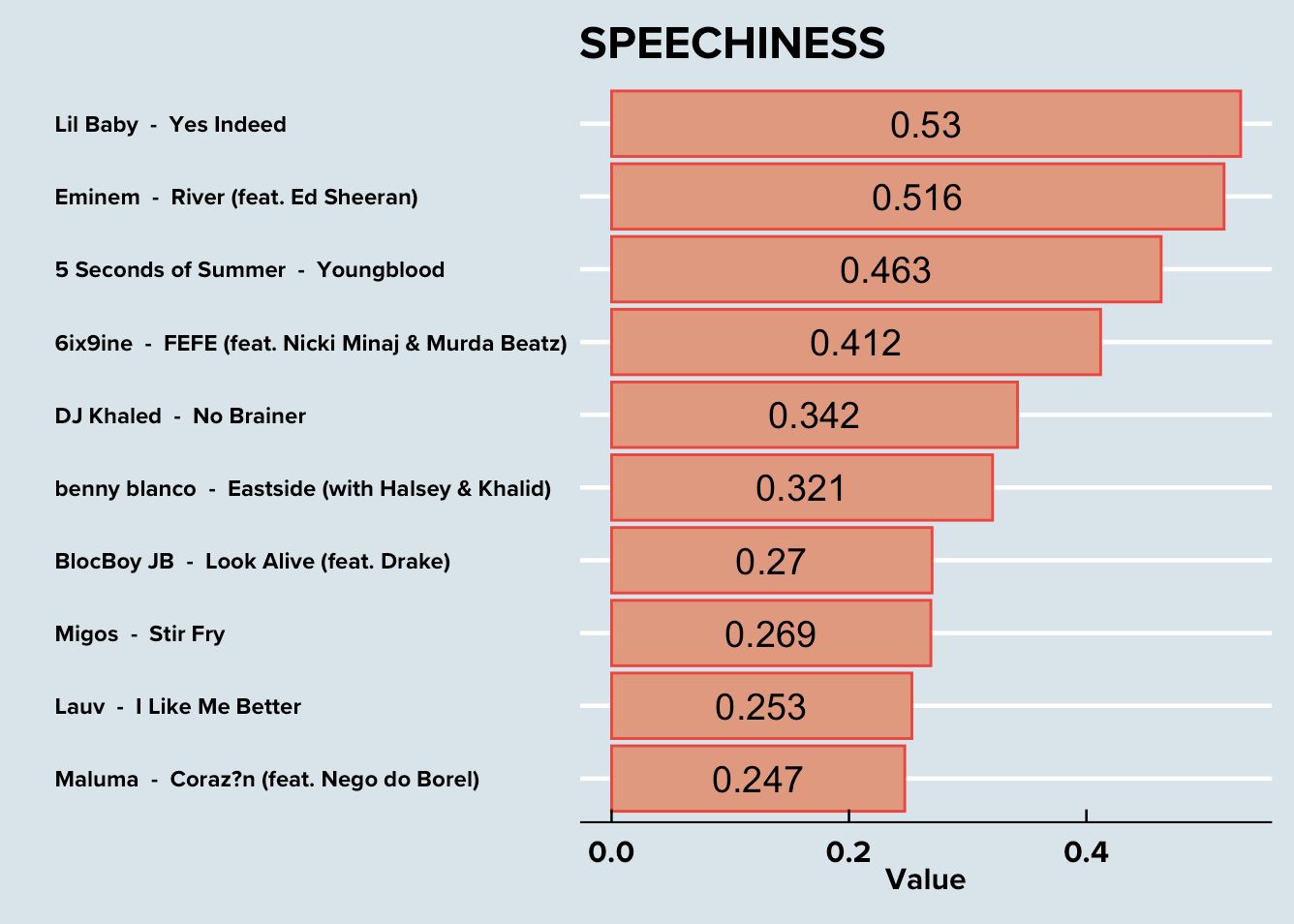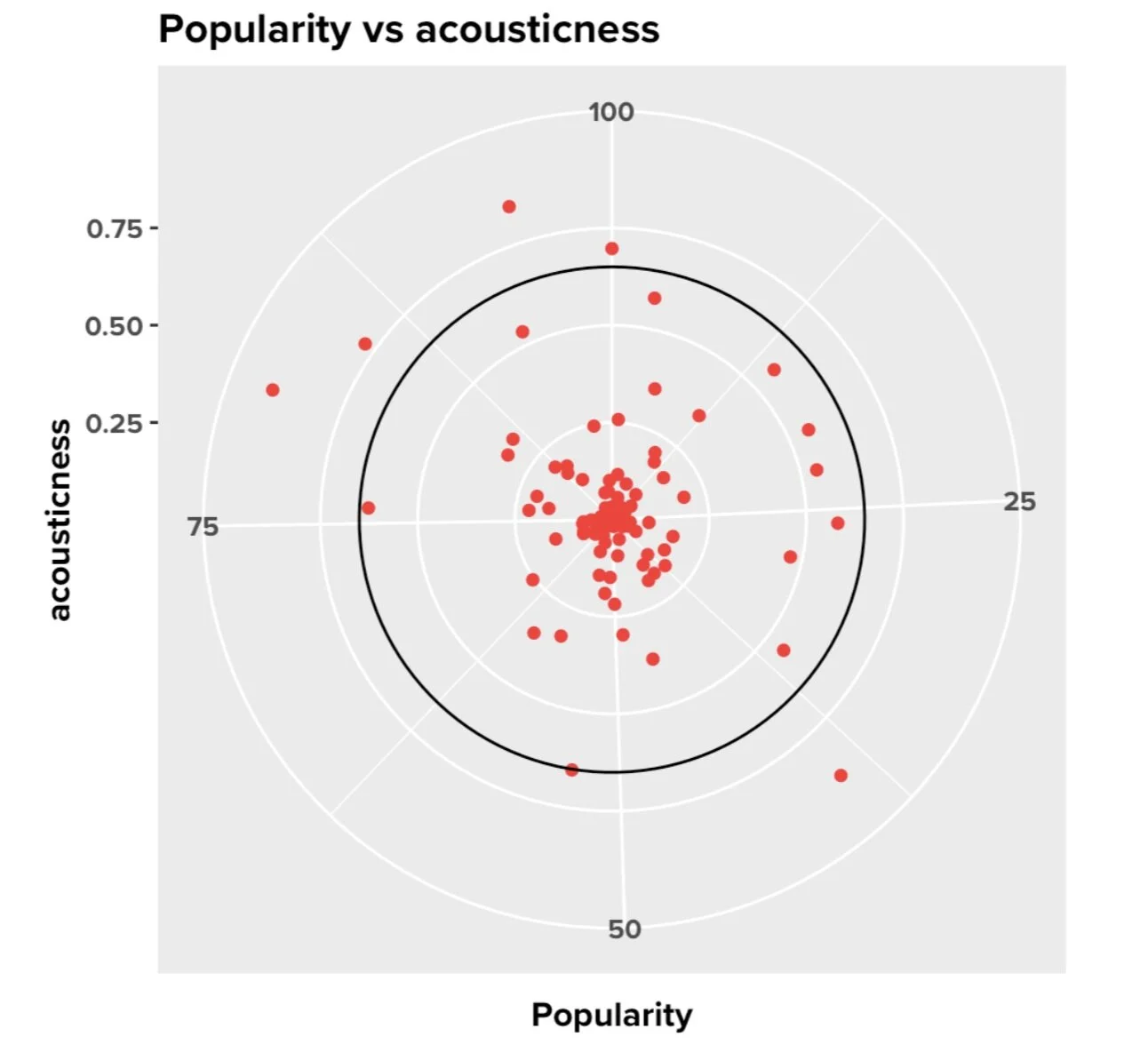Spotify Top 100 Songs 2018
I am an avid music lover and musician, and Spotify has never disappointed me throughout the years. Supplying me with thousands of songs, dozens of playlists and even links to concert tickets, I have been able to experience a wide diversity of music.
Unwrapping Spotify’s Wrapped
Spotify recently started dropping their new thing called Wrapped. It is exactly what it sounds like, a wrap of your most played songs from the past year.
Spotify also curates playlists of the top 100 songs played each year.
Goal ~ comparing my top 2018 songs to Spotify’s top 2018
While I am very in tune with my own taste in music, the most exciting part of this project was to be able to see what other people in the world were listening to. I decided to focus on 2018, an exceptional year for music, and explore Spotify’s top 100 songs in conjunction with my top 100 songs from 2018. This way I could see the overlap or difference between my music and the most streamed songs from last year.
My ultimate goal for this project was to create aesthetic visuals using fun packages while also understanding what qualities make a top 100 song.
The Data ~ Spotify’s top 100 songs from 2018
The data set I used for this project comes from Kaggle, an online community of data scientists and machine learners, owned by Google LLC. Kaggle is a free source that allows users to find and publish data sets and explore data models in a web-based data-science platform.
Getting into the weeds
Pop(ular) Artists
Plotting the most popular artists by frequency of songs that made in the top 100 from 2018
Let’s go to the speech
Speechiness is defined as the presence of spoken words in a track. The more exclusively speech-like the recording, think someone actually speaking, the closer the attribute value is to 1.0.
The acoustics are great in here
The most acoustic song is by Billy Eilish called “lovely” featuring Khalid. The second and third most acoustic songs are by XXXTENTACTION with the songs “changes” and “Everybody Dies In Their Nightmares”.
How do acoustics affect the popularity of a song? If acoustic means less electronic, does that instantly imply less popular?
This plot shows that, as per the music standards, the lesser the acoustics, the more electronic the song is.
The concentration of the values in this plot is closest to the center, approximately a value of 0.35, thus we can say that the majority of popular songs include electronic sounds.
“Rapping” Up Spotify’s Top 100
The genre rap has become increasingly more and more popular, with 36% of the Top 2018 songs defined as rap. I created sub data sets composed of the songs consider rap and no rap.
What are the plots?
Danceability is on average higher in rap songs than non-rap songs. Interestingly enough, on average most non-rap songs are louder than rap songs. Unsurprisingly, speechiness is clearly higher in rap songs than in other non rap songs.
My Top 2018 Songs
Uploading my top 2018 playlist was a feat and a half! To access my own playlist from Spotify I went down a Google, GitHub and Reddit rabbit hole. I watched many tutorials, scoured the Spotify Web API pages and spent several hours changing my redirect URI on my Spotify developer’s dashboard. Alas, all this research paid off! I was finally able to figure out how to web scrape and I felt like a true coder.
I wanted to see who my most popular artists were depending on the variable ‘track_popularity’.
While these weren’t necessarily my most played songs, they were the most popular songs from my playlist based on overall plays on Spotify.
Rap vs No rap in My Top 2018 and Spotify’s Top 2018
I created vectors for my data set called ‘my_rap_songs’ and ‘my_non_rap_songs’.
Once I created a new data set with another variable called ‘type’, I plotted the results using a density plot.
I found that the songs in my playlist that are considered non-rap and the songs in the Spotify playlist that is non-rap, have a duration closest to three and a half minutes. I also noted that the rap songs in my playlist are typically shorter in duration than the Spotify rap songs.
Also, notice that the density plots for my playlist and Spotify’s playlist are similar in shape and size.
The Future of Music
Throughout this data analysis, I found that there are way more trackable variables related to a song than I could have ever imagined. I found out that rap makes up 36% of the Spotify Top 2018 playlist and 25% of my Top 100 Spotify playlist. With this in mind, I can generalize that rap is increasing in popularity. Not convinced? Check out this article from Business Insider on rap surpassing rock as the most popular genre.









